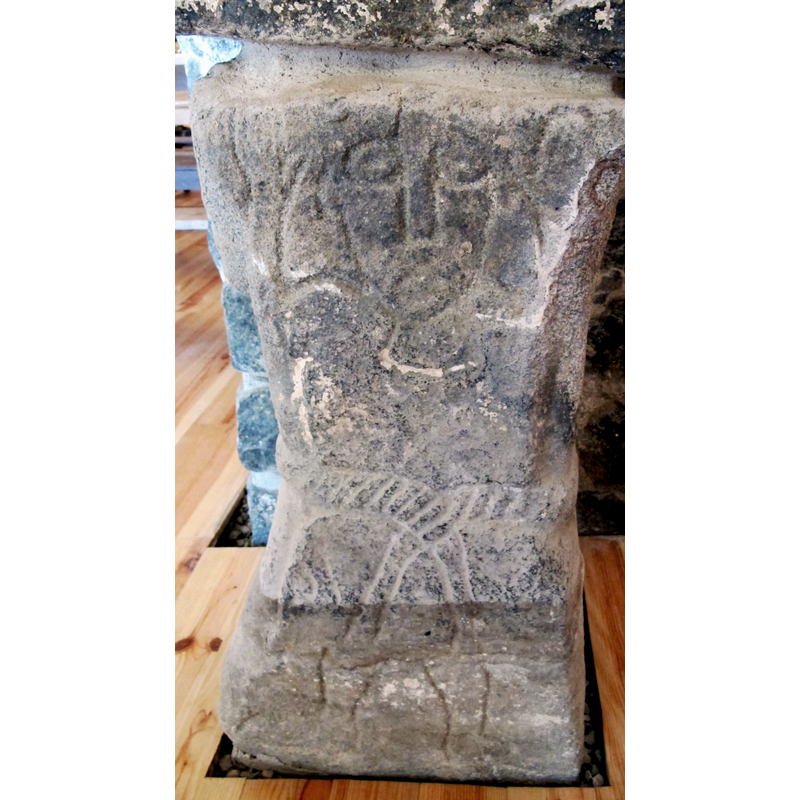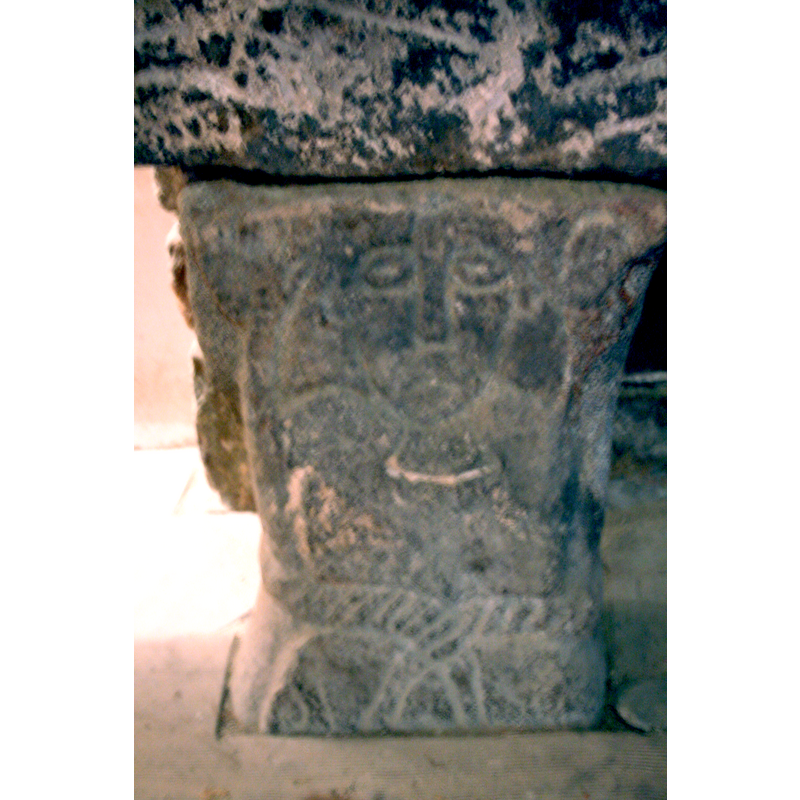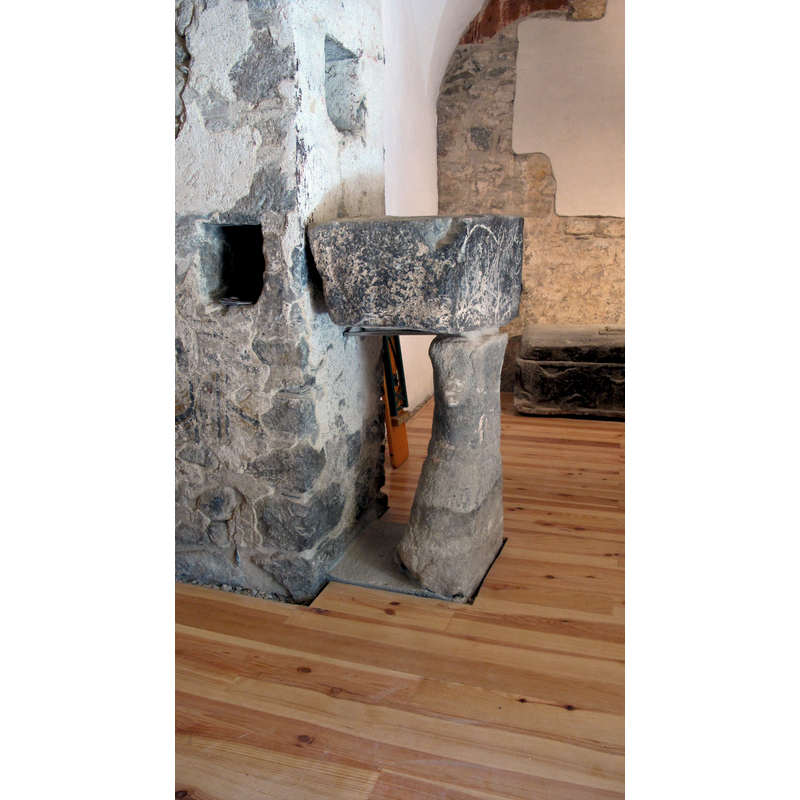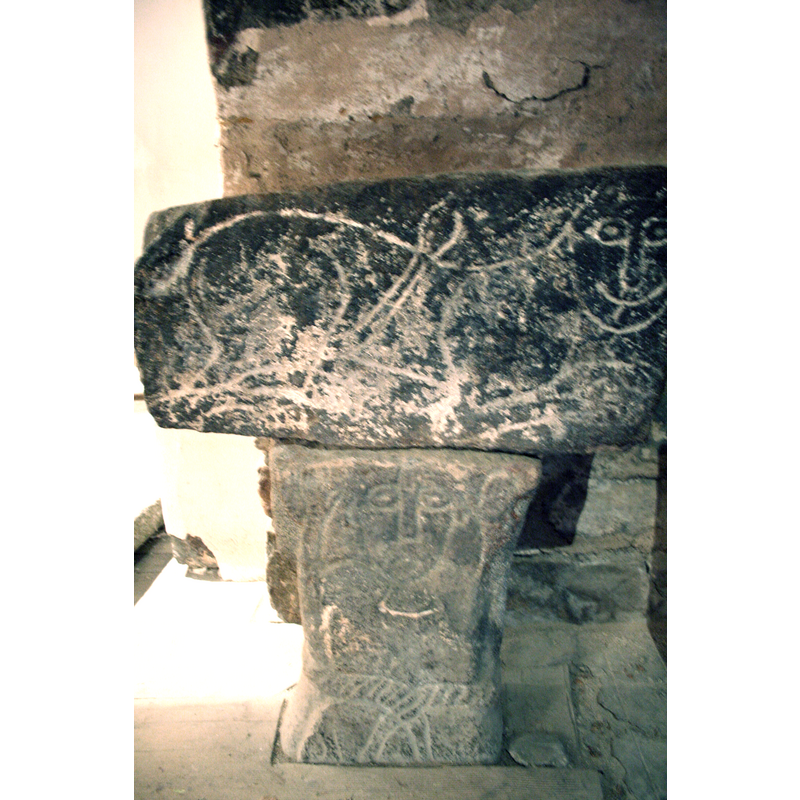Sorpe No. 2
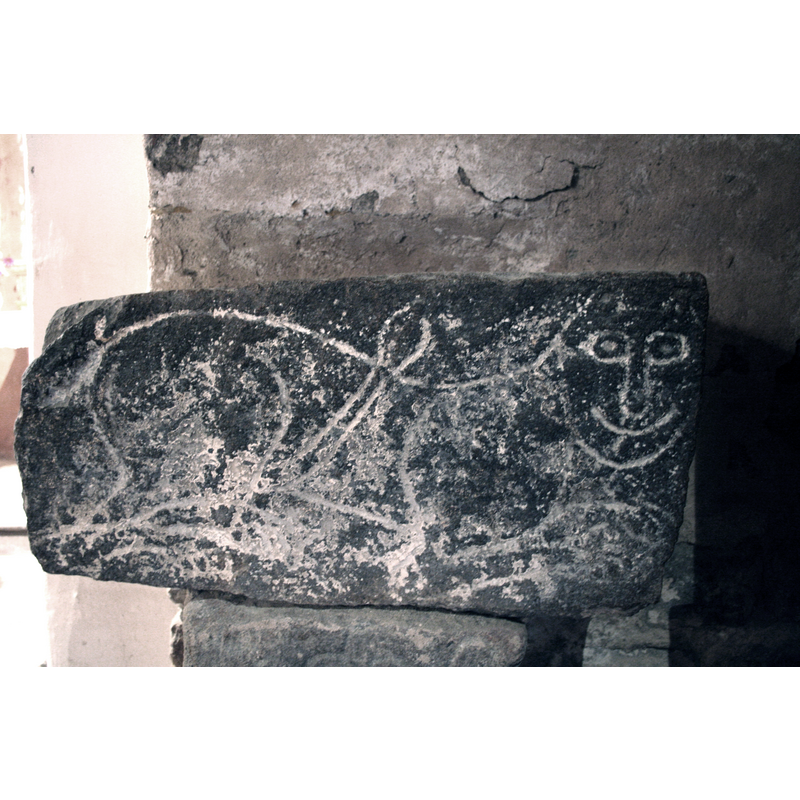
Image copyright © Esteve García Antoñana, 2017
Image and permission received from the author (e-mail of 2 January 2018)
Results: 6 records
animal - mammal - lion - couchant
Scene Description: although some of the sources describe it as having a human face and being "about to jump", it is a commonly presence in the schematic rendering of lions in the Romanesque period throughout Europe, including the characteristic position of the tail
Copyright Statement: Image copyright © Lander Sarasola, 2017
Image Source: digital photograph taken 15 August 2016 by Lander Sarasola
Copyright Instructions: image and permisson received from the author via Mikel Unanue (e-mail of 30 December 2017)
human figure - male - orant pose
Scene Description: note the laboriously rendered rope-belt in such a sketchy figure
Copyright Statement: Image copyright © Lander Sarasola, 2017
Image Source: digital photograph taken 15 August 2016 by Lander Sarasola
Copyright Instructions: image and permisson received from the author via Mikel Unanue (e-mail of 30 December 2017)
view of base
view of basin - front side
view of stoup
Scene Description: the quadrangular object is wall-mounted on steel brackets, and a stone believed to have been originally a funerary stella
Copyright Statement: Image copyright © Lander Sarasola, 2017
Image Source: digital photograph taken 15 August 2016 by Lander Sarasola
Copyright Instructions: image and permisson received from the author via Mikel Unanue (e-mail of 30 December 2017)
INFORMATION
FontID: 02254SOR
Object Type: Stoup?
Church/Chapel: Església de Sant Pere / Iglesia Parroquial de San Pedro de Sorpe
Church Patron Saints: St. Peter
Church Location: Sorpe, Alto Aneu, Spain
Country Name: Spain
Location: Lérida / Lleida, Cataluña / Catalunya
Directions to Site: Located off the C-28, Valls de Cardós i d'Aneu, in the Pallars Sobirà, not far from the Vall d'Aran, 7 km N-W of Esterri d'Aneu, Bonaigua road; in the municipality of Alto Aneu
Ecclesiastic Region: Diócesis de Urgel
Historical Region: Pallars Sobirá
Font Location in Church: Just inside the entrance to the church
Century and Period: 12th - 13th century [composite], Medieval [composite]
Workshop/Group/Artisan: oil font? / pica d'oli?
Cognate Fonts: The lion on this font has clear resemblence with the one on the font at Son
Credit and Acknowledgements: We are grateful to Lander Sarasola and to Esteve García Antoñana for their photographs of this church, fonts and stoup
Church Notes: The mural paintings, some of which are now preserved at the MNAC in Barcelona and MDU (Diocesan Museum of Urgel)
Font Notes:
Click to view
Described in Carbonell i Esteller ([s.d.]: 67) as a font with ornamentation that can be considered as a sample of very primitive art ["té decoració que podem considerar com a mostra d'un art popular molt primitiu" and as being a very interesting font with figural and other ornamentation (Buron, 1980, p.261). Mestre i Godes and Adell recognise it as an 'oil font' ["pica d'oli"], the type or early or Romanesque tub-like fonts which are found in the area of the Pyrenees and were often used to store the tithe oil for the illumination and heating of the church. It has been argued by some that they are the original immersion fonts, later used to hold the tithe oil contributed by the brethren to light and warm up the churchs. This one is ornamented with animal figures: a lion with a human (?) face in an about-to-jump [rampant?] pose [crouching, really]. It now stands on a stele (?) which serves as the base and which is decorated with a human figure (Mestre i Godes, 1999, p. 94) [the human figure stands face-front with raised arms, either an orant or an atlante; he wears a very prominent rope belt. Described and illustrated in Catalunya romànica (1984- , vol. XV: 156-157) where it is mentioned that there are traces of another animal, just the paws (?), or another animal on one other side of this basin; this source describes the figure on the base as definitely an orant, and compares the lion on the basin to the one in the font at nearby Son; this source suggests a dating to the Romanesque period, but it recognises the difficulty in dating these objects with any certainty. Cabestany, Matas & Palau (2005) suggest attribution to a local rural workshop of the late 12th or early 13th century. The composite object is now [2016] used as a holy-water stoup.
COORDINATES
Church Latitude & Longitude Decimal: 42.652778, 1.079958
Church Latitude & Longitude DMS: 42° 39′ 10″ N, 1° 4′ 47.85″ E
UTM: 31T 342620 4724045
MEDIUM AND MEASUREMENTS
Material: stone, type unknown
Number of Pieces: two
Font Shape: rectangular (mounted)
Basin Interior Shape: rectangular
Basin Exterior Shape: rectangular
Basin Total Height: 38 cm
Height of Base: 54 cm
Font Height (less Plinth): 92 cm [calculated]
Square Base Dimensions: 30-40 x 17 cm
Trapezoidal Basin: 46 x 31 cm
Notes on Measurements: Catalunya romànica (1984- , vol. XV: 156-157)
REFERENCES
Buron, Vicenç, Esglésies romàniques catalanes, 2a. ed., Barcelona: Artestudi, 1980
Cabestany i Fort, Joan-F., El romànic de la vall d'Àneu, Barcelona: Institut d'Estudis Catalans, 2005
Carbonell i Esteller, Eduard, Art romànic a Catalunya, segle XII, Barcelona: Edicions 62, 1974-1975
Fundació Enciclopèdia Catalana, Catalunya romànica, Barcelona: Fundació Enciclopèdia Catalana, 1984-
Mestre i Godes, Jesús, Viatge al romànic català: les valls pirenenques, Barcelona: RACC Club-Edicions 62, 1999

